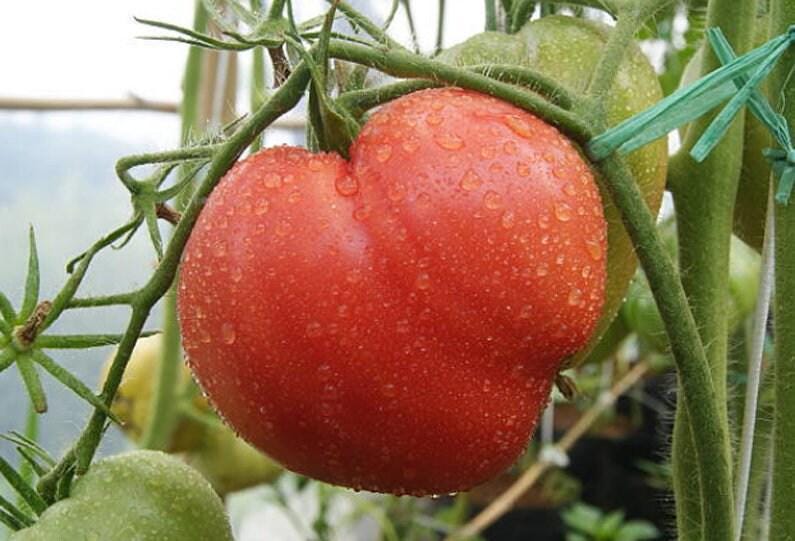Oxheart, also known as 'Cuore Di Bue' (Italian for ox heart) is so named because of its shape. It is also known as "Pear of Liguria", after the northern Italian region where it has long been celebrated. This heirloom is dense with few seeds, cooks down to a robust, thick sauce, and really shines when roasted. It is also a star sliced fresh atop salad greens or paired with mozzarella and fresh basil leaves.
The large spreading vines of Oxheart tomatoes bear plentiful amounts of 14 Oz tomatoes that are heart-shaped and bright pink in color. The flesh is solid, with few seeds, and takes 80 days to ripen. Indeterminate. The Oxheart strain of tomatoes have been commonly used for canning and sauce in America for generations. Because of their thick, meaty flesh, Oxheart tomatoes are excellent for preserving.
~ planting ~
When to start inside: RECOMMENDED. Start tomatoes indoors 6-8 weeks before the last frost of spring, sowing the seeds in a flat 1/4" deep and 1" apart. Keep the temperature at 70-75 degrees F until germination, as well as providing adequate light in a sunny window or under a grow light; keep the soil moist, but make sure drainage is adequate. Bottom heat is highly recommended to speed germination.
When the second set of leaves emerges, transplant the seedlings into individual pots; bury the stems up to the lowest set of leaves to grow strongly rooted plants. A week before planting the seedlings outside, begin exposing them to the weather during the day to harden them; tomatoes cannot endure cold weather, and should not be transplanted outside until all threat of frost has passed. When the soil temperature reaches at least 70 degrees F, plant the seedlings in full sun and very rich soil; once more, bury the entire stem up to the lowest set of leaves. Space the plants 2' apart.
When to sow outside: Recommended for mild winter climates only: 1 to 2 weeks before average last frost and when soil temperatures are at least 60° F.
Days to Emerge: 5–10 days
Seed Depth: ¼"
Seed Spacing: A group of 3 seeds every 24"–36"
Row Spacing: 36"
Thinning: When 2" tall, thin to 1 every 24"–36"
~ growing ~
Indeterminate tomato varieties often perform best when provided with a trellis or support, since this protects them from various pests and diseases in connection with too much soil contact. Put the supports in place before the seedlings develop vines. As the vines begin to grow, tying them to the support helps their development. Since temperatures below 55 degrees F can damage production, protect the plants if temperatures drop. A thick layer of mulch helps conserve moisture and control weeds. Pruning the "suckers," or shoots that grow between the main stem and the branches, will greatly improve the production and strength of the plant.
~ harvesting ~
Harvest tomatoes when fully colored and firm. About 1 month before the average first fall frost, clip all blossoms and any undersized fruit off the plant. This will steer all the plant’s remaining energy into ripening what’s left. If you have a lot of green tomatoes near the end of the season, and a frost is approaching, pick them and store them indoors in a single layer away from direct sunlight to ripen.



















